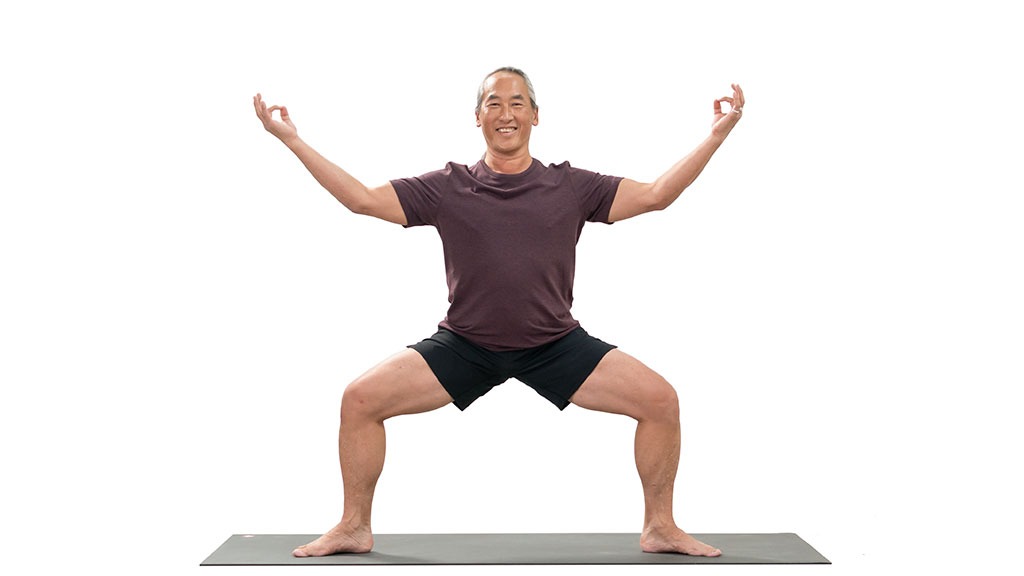
In the world of yoga, certain poses help us connect deeply to the earth and build a foundation of strength from within. Temple Pose—also known as Goddess Squat or Utkata Konasana—is one such posture. It’s a powerful yet graceful asana that opens the hips, strengthens the legs, and cultivates inner balance.
Whether you’re new to yoga or looking to deepen your practice, Temple Yoga Pose offers numerous benefits for the body and mind. In this blog, we’ll explore how to do Temple yoga Pose correctly, its physical and energetic benefits, and how to incorporate it into your practice.
What is Temple Pose?
Temple Yoga Pose is a wide-legged squat with the knees bent and the arms lifted or brought into prayer. It resembles a poised, grounded stance—like a warrior preparing for something great. While often referred to as Goddess Pose, the name “Temple Pose” emphasizes the idea of treating your body as a sacred temple.
Sanskrit Name:
Utkata Konasana
- Utkata = powerful
- Kona = angle
- Asana = pose
How to Practice Temple Pose (Step-by-Step)
- Start in a wide-legged stance with your feet about 3–4 feet apart.
- Turn your toes out to about 45 degrees, aligning your knees in the direction of your toes.
- Inhale and raise your arms to shoulder height or bring your palms together at your heart in prayer.
- Exhale and bend your knees deeply, dropping your hips as if you’re sitting into an invisible chair.
- Keep your spine tall, shoulders relaxed, and core engaged.
- Hold the pose for 5–10 breaths.
- To release, straighten your legs and lower your arms on an exhale.
Benefits of Temple Pose
Physical Benefits
- Strengthens the thighs, glutes, and calves
- Tones the core and back muscles
- Opens the hips, groin, and chest
- Improves posture and balance
Energetic and Emotional Benefits
- Grounds the body and calms the mind
- Encourages inner strength and confidence
- Stimulates the Sacral and Root Chakras
- Promotes a sense of empowerment and stability
Tips for Beginners
- If your knees feel strained, reduce the depth of your squat.
- Keep your knees in line with your toes to protect your joints.
- Press evenly through your feet to maintain balance.
- Use a wall for support if you need help with stability.
Variations and Modifications
- Arm Variations: Raise arms overhead in a cactus or goalpost shape to engage the shoulders.
- Dynamic Flow: Add gentle pulsing in the squat to build strength and endurance.
- Chair Support: Sit lightly on the edge of a chair to ease pressure on the hips and knees.
When to Avoid Temple Pose
Temple Yoga Pose is generally safe for most practitioners, but it may not be suitable for individuals who:
- Have knee or hip injuries
- Are recovering from recent lower back surgery
- Experience balance issues (unless using support)
Always check with your yoga instructor or healthcare provider if you’re unsure about including Temple Yoga Pose in your practice.
Conclusion
Temple Pose is more than just a physical stance—it’s a symbol of strength, stability, and sacred connection. Practicing this empowering pose regularly can enhance your flexibility, build resilience, and ground you both mentally and emotionally.
Whether you’re moving through an energizing flow or seeking a moment of stillness, let Temple Pose serve as a reminder that your body is a temple—deserving of strength, reverence, and care.
Frequently Asked Questions (FAQs)
1. Is Temple Yoga Pose the same as Goddess Pose?
Yes, Temple Yoga Pose and Goddess Pose both refer to Utkata Konasana. The names are used interchangeably, although “Temple Pose” often emphasizes a grounding and sacred energy.
2. Can beginners do Temple Pose?
Absolutely. Beginners can start with a shallower squat and use props like a wall or yoga block for additional support.
3. How long should I hold Temple Pose?
Hold the pose for 30 seconds to 1 minute, depending on your strength and comfort level. Gradually increase the duration as your stamina improves.
4. What chakras are activated in Temple Pose?
Temple Pose stimulates the Root Chakra (Muladhara) and Sacral Chakra (Svadhisthana), supporting grounding, creativity, and emotional balance.
5. Can Temple Pose help with hip flexibility?
Yes, this pose is excellent for hip opening. Regular practice can improve mobility in the hips and inner thighs, helping to release tension and increase flexibility.






